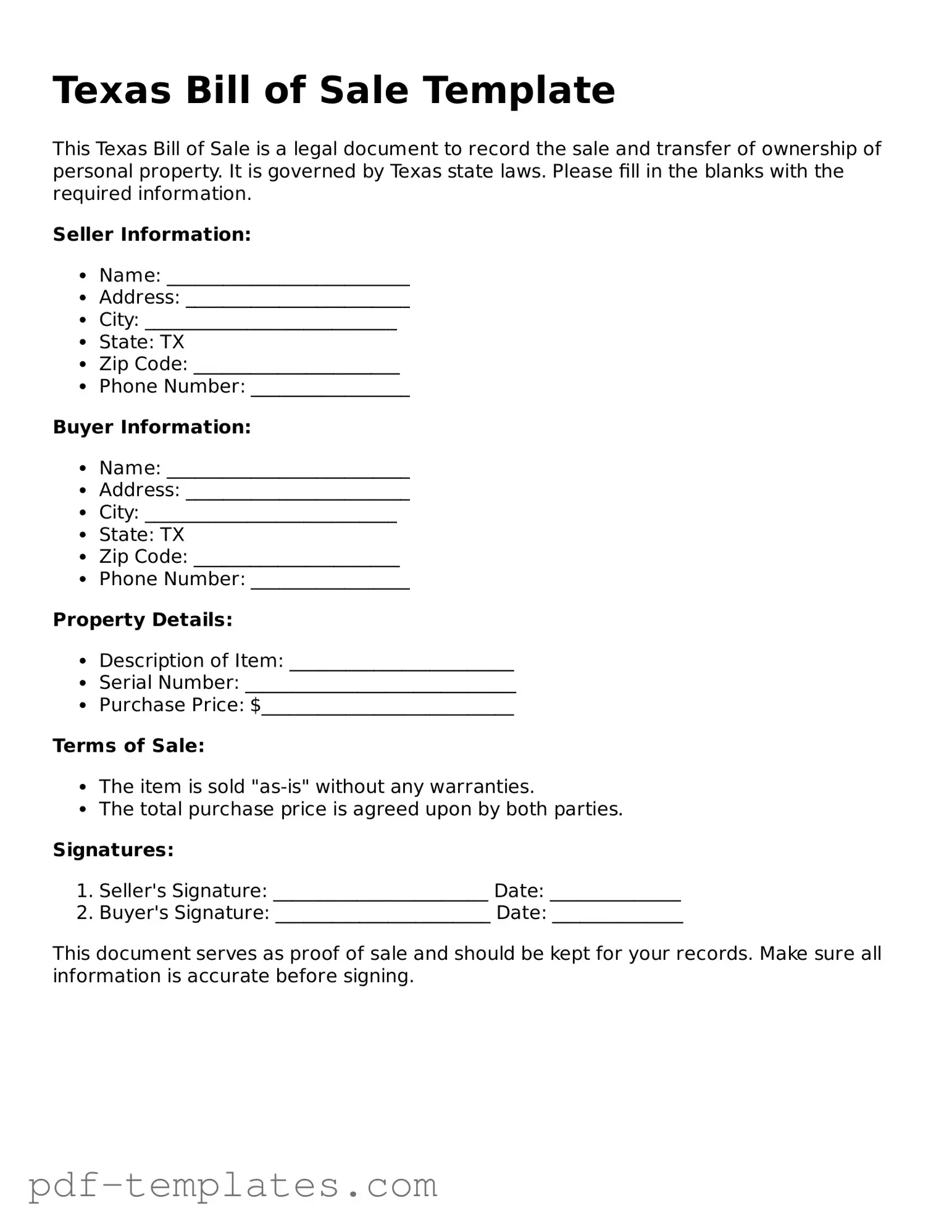The Texas Bill of Sale form serves as a vital document in the transfer of ownership for personal property, whether it be vehicles, boats, or other tangible items. This form outlines essential details such as the buyer's and seller's names, addresses, and contact information, ensuring both parties are clearly identified. It also specifies the description of the item being sold, including make, model, year, and any relevant identification numbers, which helps prevent disputes over ownership. Additionally, the form captures the sale price and the date of the transaction, providing a clear record of the exchange. While not always legally required, having a Bill of Sale can protect both parties by documenting the terms of the sale and serving as proof of ownership. In Texas, the Bill of Sale can also be useful for tax purposes and may be required for vehicle registration. Understanding the key components of this form is essential for anyone engaging in a sale or purchase in the state, as it facilitates a smoother transaction and helps avoid potential legal issues down the line.
